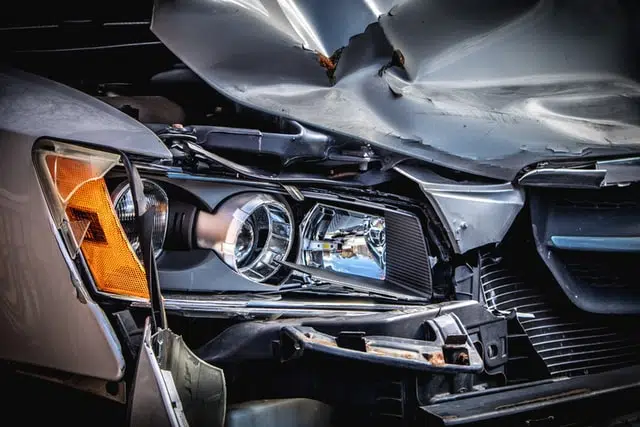Home » Blog » Car » Car Insurance Insights » How to Choose Your Excess: High vs Low
Categories
Tags
animal welfare
breed profile
buying a car
buying a pet
Car
car accessories
car care
car features
car insurance
Car safety
car sales
car service
cat
cat behaviour
cat body language
Cat Breeds
cat food
cat insurance
comprehensive car insurance
Dog
Dog Behaviour
dog body language
Dog Breeds
dog food
Dog Insurance
dog training
eco friendly cars
Kitten
New Car
pet accessories
pet activities
Pet Adoption
pet breeders
pet days of the year
pet fun stuff
Pet Health
pet insurance
pet parenting
Pet Safety
pet services
Puppy
rescue pets
road safety
road trip
safe driving
Recent Blog:
Facebook Posts
1 week ago
Ready for a fun challenge? 🐾 Take a wild guess: What breed is this adorable fellow? 🐶 Drop your answers in the comments, and don't forget to scroll down to check if you nailed it! 🎯 Let's see who knows their dog bree#dogbreedquizgBreedQuiz![]() .
.![]() .
.![]() .
.![]() .
.![]() .
.![]() .
.![]() .
.![]() .
.![]() .
.![]() .
.![]() .
.![]() .
.![]() .
.![]() .
.![]() .
.![]() Lagotto Romagnolo
... See MoreSee Less
Lagotto Romagnolo
... See MoreSee Less
1 week ago
Did you know heart disease in dogs and cats can start with bad oral health? Find out more.....
... See MoreSee Less
Why Pet Dental Health is Linked to Heart Disease and Other Illness
bit.ly
Pet dental health usually brings to mind images of teeth and gums. In reality, it goes far beyond that. Pet oral health can be directly linked to systemic2 weeks ago
Yes or No - got any road adventures planned for Easter? Whatever you answered, here are some great ideas for this year (or next):![]() #easter.
... See MoreSee Less
#easter.
... See MoreSee Less
Driving, Flying and Staycations with Dogs and Cats this Easter
bit.ly
Is cat or dog friendly Easter travel on your wishlist? You're one of many! Travelling with dogs, cats and even some other critters (think bearded dragonsIf you’ve ever found yourself scratching your head, trying to decide between a high or low excess when purchasing insurance, you’re certainly not alone. It’s a dilemma many face and understandably so; the choice you make can have a significant impact on your finances and peace of mind. Choose your excess wisely…
In this article, we’re diving deep into the world of insurance excess, breaking down what it means, and guiding you through the factors you should consider to make the best choice for your unique situation. Whether you’re a seasoned policyholder or new to the game, this post is packed with insights and tips to help you navigate the sometimes-confusing waters of insurance excess.
In this article

Here’s an analogy …
When you choose your excess is it better to go for a high or low excess? There’s no right or wrong answer because it’s a bit like choosing shoes – they need to be the right fit for you.
If you’re on a mission for shoes, you might ask the store assistant to let you try a few sizes. This allows you to see which ones fit you perfectly. You may try on a few different styles. You’ll think about what kinds of situations you’ll wear them in. You may decide to branch out into comfy heels or simply stick to familiar flats.
And you’re always going to consider your budget before buying.
Similarly, choosing an excess is about:
- Looking back at past experience and what you expect to encounter in future, then
- Factoring in your financial situation now (budget, savings, etc), before
- Deciding on what dollar amount you can commit to in securing financial cover when you need it.
Let’s dive a little deeper…

Understanding choosing your excess
It’s always clever to recap your understanding of what an excess is before making a choice on whether to choose high or low.
Two of the moving parts in your car insurance policy are your premium and your excess. Another is the value of your car as listed in your policy (read this: What’s the Difference Between Market Value and Agreed Value). But we digress…
As you know, your premium is the amount of money you pay for the financial protection your car insurer provides. You might pay this monthly, annually or somewhere in between.
Your excess is the lump sum you pay when you successfully claim to get your car repaired and back into action (or completely replaced if it’s a write-off).
These two moving parts are a bit like a seesaw. If your excess is low, your premium will be higher and if you select a higher excess your premium will be lower.

Car insurance excess: how it works
The excess amount you choose when locking in your car insurance policy is then fixed across the policy duration. Anything over and above your excess will be paid by your insurer, in the event of a successful claim.
As an example, if your excess is $500 and your car costs $3,000 to fix, your insurer will pay the remaining $2,500. If your car repairs will instead cost $6,000, your share to pay is still only the $500 excess. And you’ll pay this as a lump sum to your insurance provider.
So, you’ll need to be confident you’re happy with the car insurance excess amount you choose to commit to.
If you set your excess at $1,500, is that an amount you’ve budgeted for? Will you be able to pay it if you needed to? Because if not, you might want to opt for a lower excess – say, $500. If you can afford the higher upfront car insurance premium that comes along with that, of course…
Your ultimate decision is whether to pay less now and more later, or more now and less later.
Other excesses
While you’re pondering how to choose your excess, we must mention other types of excess payments you might encounter. Outside your agreed excess amount, that is.
They sometimes depend on who’s driving your car and sometimes not. These include:
- Age excess
- Driver history excess
- Inexperienced driver excess
- Unlisted driver excess
- Voluntary excess
Unsure which applies to your circumstances? Insurance providers’ product disclosure statements outline what types of excesses they charge. Make sure you’re across what’s covered in your policy or not before you commit.

High excess vs low?
So why would you choose one over the other? It all depends on your individual needs and your budget.
If budget is your concern, perhaps read our 5 ways to lower your insurance premium before doing your figures. And when considering your needs, give the below a read….
Choose your excess based on your needs
When you buy shoes, you’d spend a bit of time thinking about where and how often you’ll wear them. When it comes to your car insurance excess, include the following in your considerations:
- How often do you drive your car?
- What kind of driver are you – do you take risks or are you a Safety Sam?
- Where do you drive and where do you park the car?
- Who else drives your car, or are you the only driver? If the latter, here are 7 financial perks of being the only driver of your car
But really, it’s all about your finances. Your decision will ultimately come down to your budget, both now and what you expect it to be in the future.

Choose your excess and bust it
While we’re talking budgets and car insurance excess payments, did you know PD Insurance offers an excess buster?
This is our most popular comprehensive car insurance optional add-on and it’s easy to see why… In the event you need to pay your basic excess, we pay it for you instead (once per year).
Become insurance savvy
Choosing the right excess for you is all about understanding your car insurance – getting deep on the ins and outs. That’s why we’re so passionate in this blog on educating our readers. Become more insurance savvy with our resources, below:
- What Are Exclusions in Car Insurance?
- Renewing Car Insurance? Find Ways to Save on Your Next Premium
- Insuring a Tesla – How Is It Different?
- Can I Get Car Insurance with a Learner’s Permit?
- How Much is Car Insurance in Australia? We Answer
- How to Save Money on Car Insurance
Car insurance – why do you need it?
Your car insurance policy is designed to give you financial protection against the unforeseeable. Over the next 10 years you might never get a scratch on your car, or you might have your car written off by another driver tomorrow.
Or a tree branch might fall on it next week. Or a thief takes a joyride in in next month. Anything can happen, no matter how careful you are. The purpose of car insurance is to provide you with protection for your back pocket. So you can confidently use your car each day.
PD Insurance is an award winning car insurance provider with cover that gives you a soft landing. We offer financial protection and peace of mind, covering you against potential accidents, theft and damage. (If you’ve got pets, we cover them too!)
Why not get a quick quote today?
Share On:




